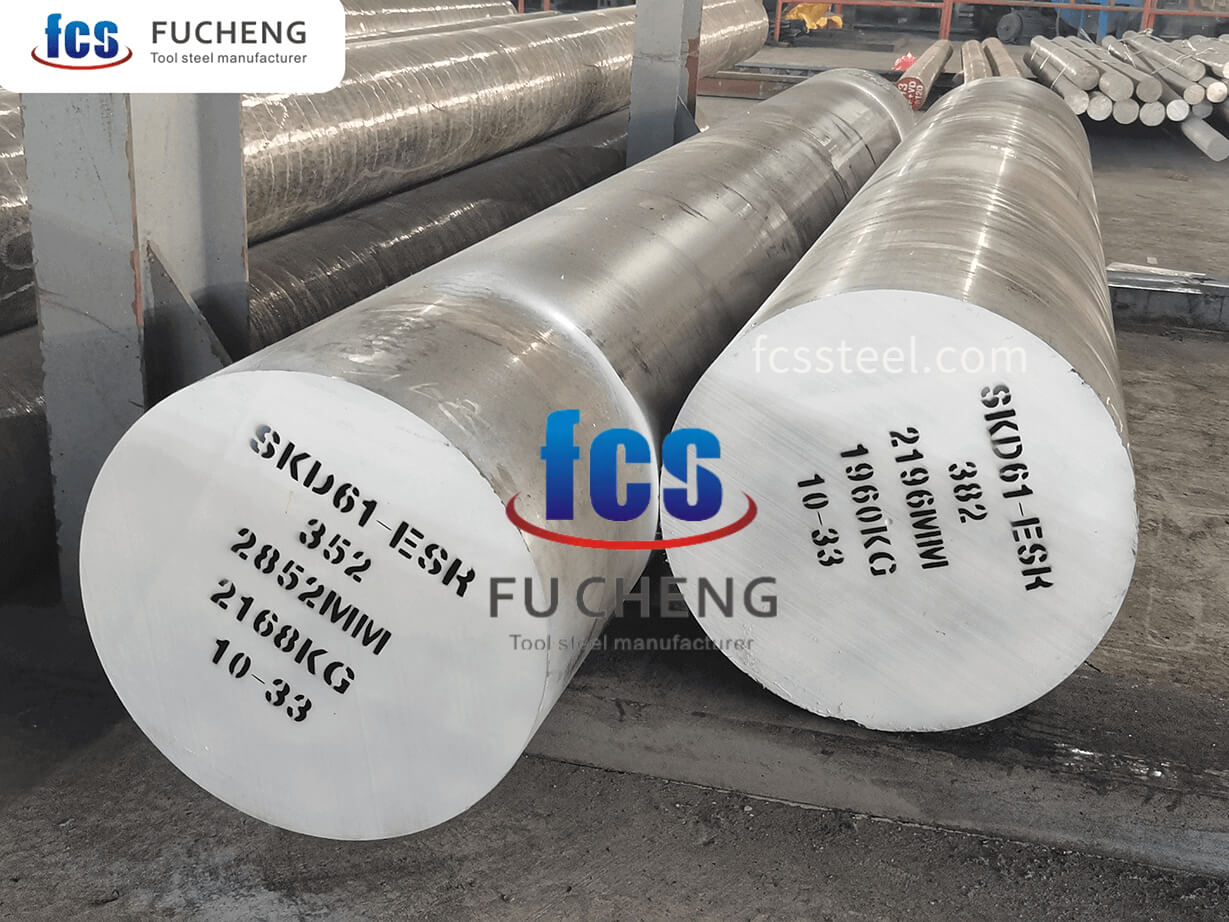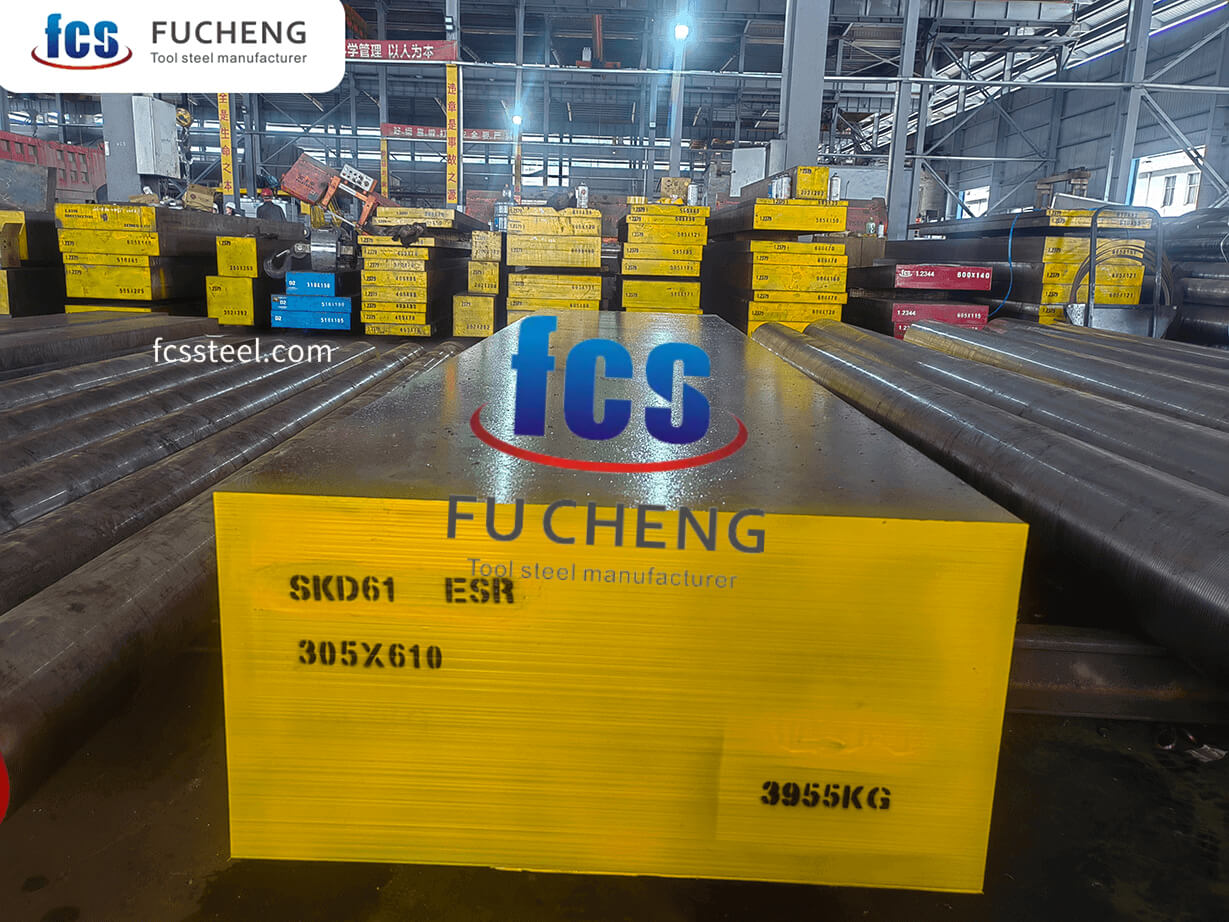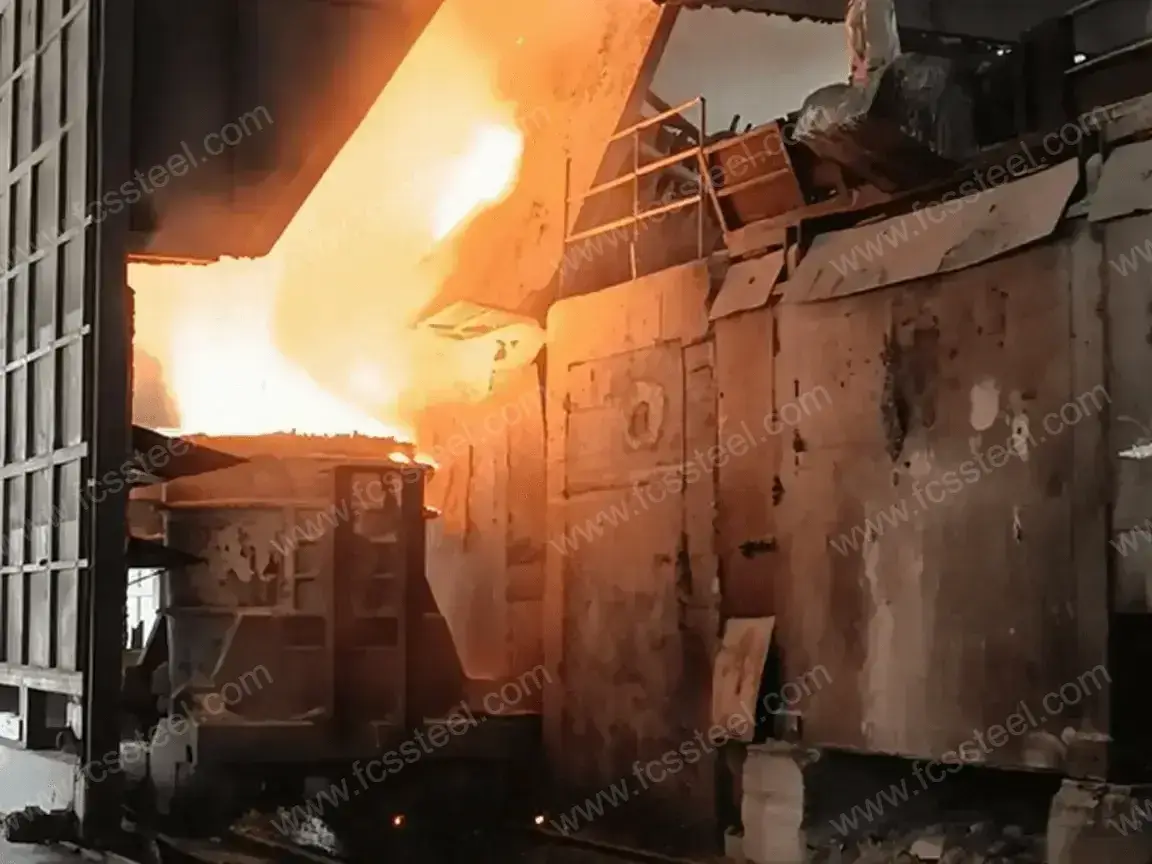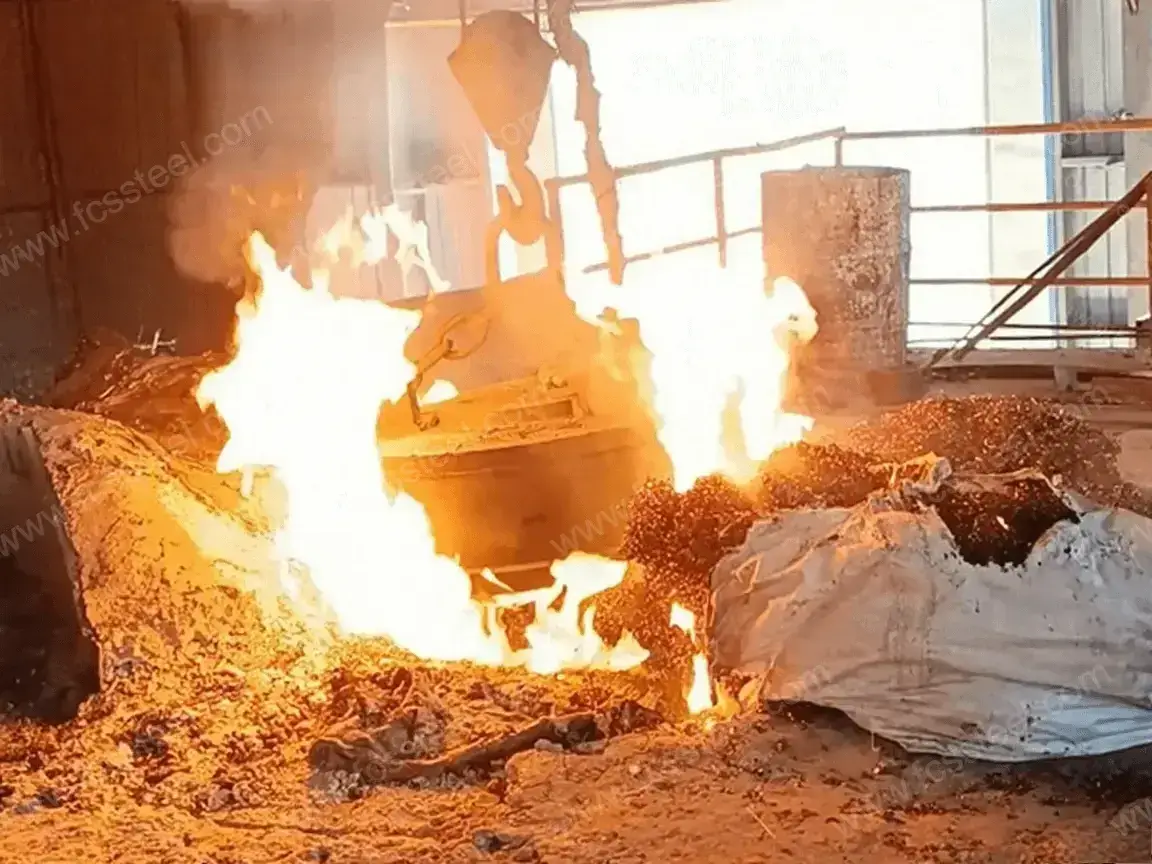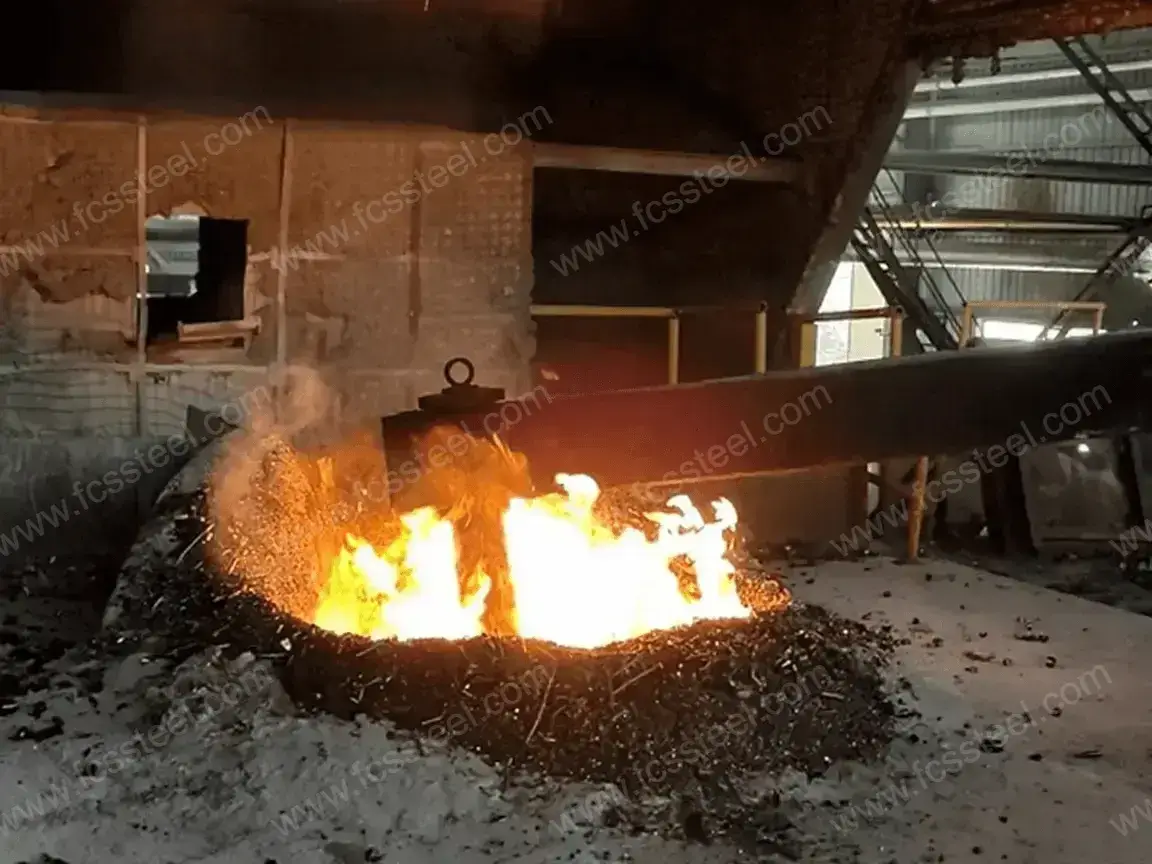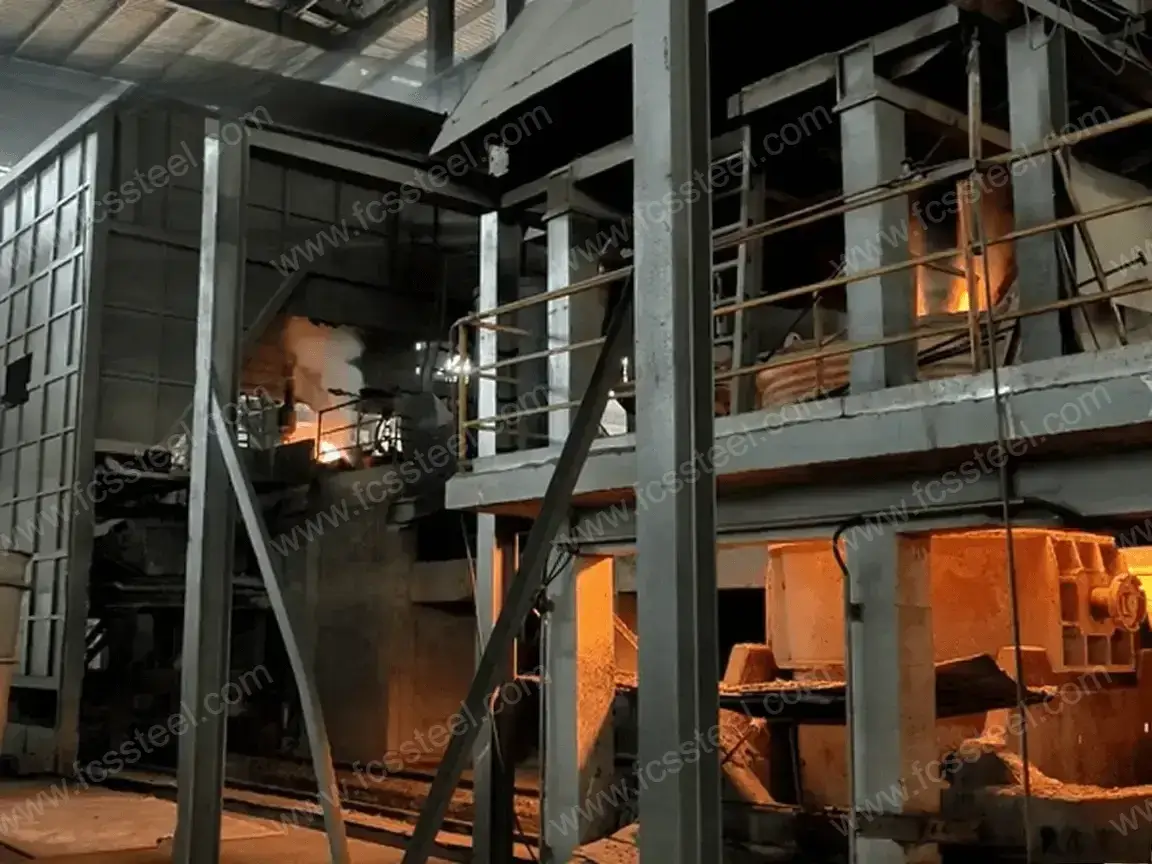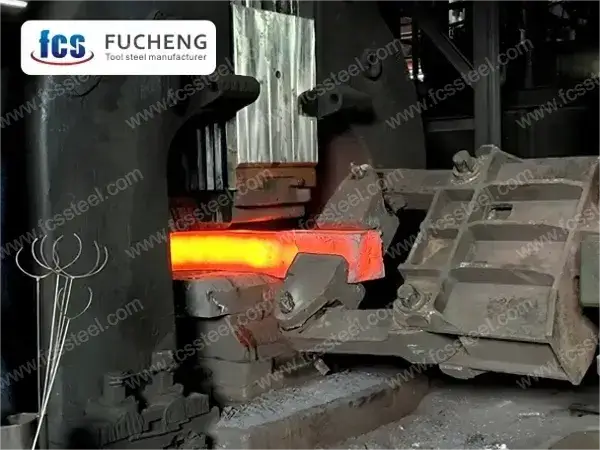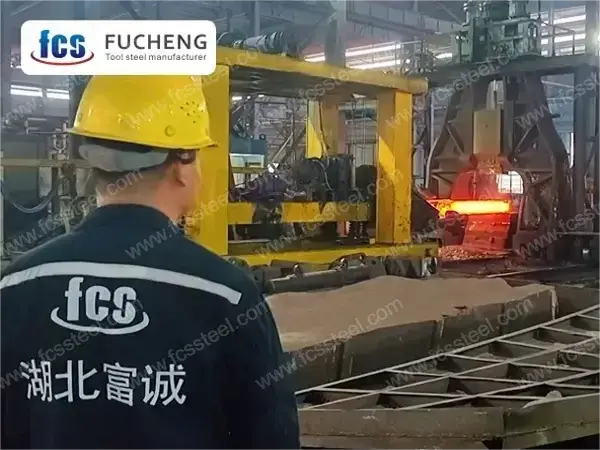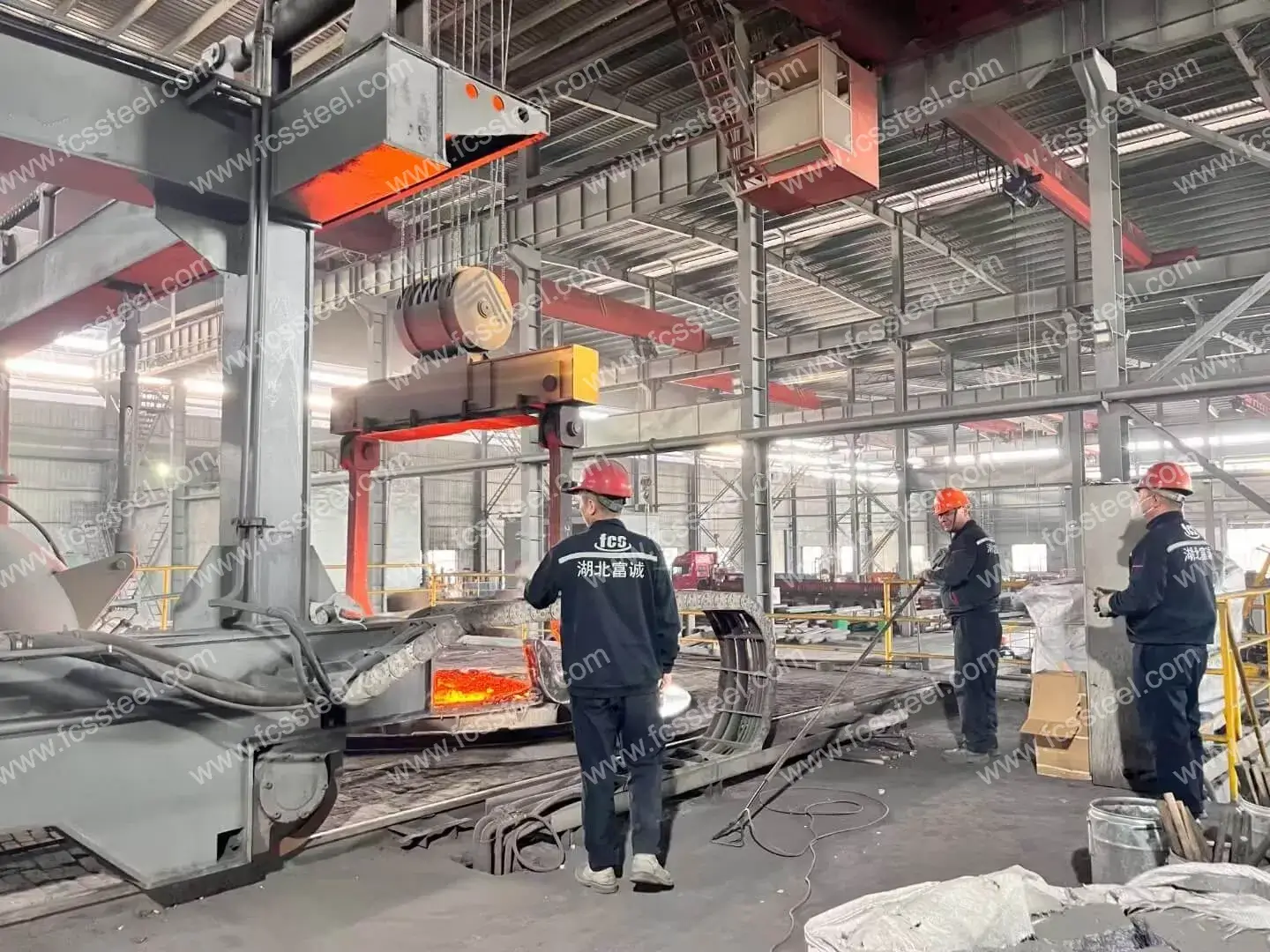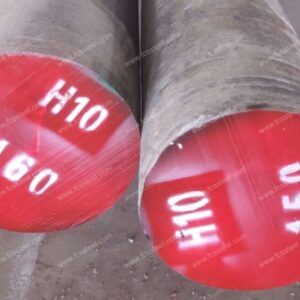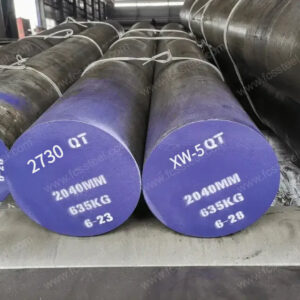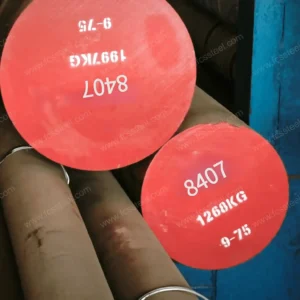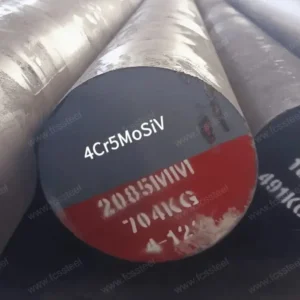SKD61 Tool Steel
SKD61 tool steel is a high-performance hot-work tool steel under the Japanese JIS standard, essentially corresponding to the American AISI H13, and belongs to the chromium-molybdenum-vanadium series. It is one of the most widely used steels in the field of hot-work dies due to its combination of high red hardness, good resistance to heat cracking, and excellent thermal fatigue life, which ensures stable performance under high-temperature working conditions such as die casting dies, extrusion dies, and hot forging dies. SKD61 has excellent hardenability and tempering stability, making it suitable for the multiple heat treatment process requirements of complex dies.
The international equivalent grades of this steel include: 4Cr5MoSiV1 under China’s GB standard, H13 under the American ASTM/AISI standard, X40CrMoV5-1 (material number 1.2344) under Germany’s DIN standard, 4Х5МФ1С under Russia’s GOST standard. With balanced properties, SKD61 has become the mainstream material choice for global hot-work die steels.
SKD61 Tool Steel Product Introduction
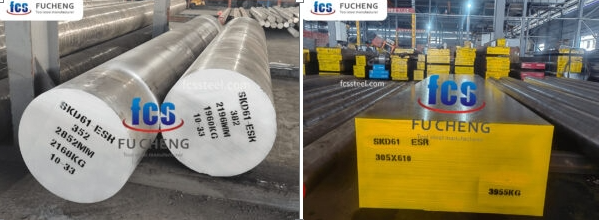
SKD61 is a Japanese Industrial Standard (JIS) hot work die steel corresponding to ASTM/AISI grade H13, Chinese GB grade 4Cr5MoSiV1, German DIN grade X40CrMoV5-1/1.3344. The smelting process is usually EF+LF+VD+Hot rolled /Hot Forged+Annealing.
High-temperature mold applications pose a major challenge to tool engineers. Premature failure due to thermal fatigue, cracking and wear can result in costly downtime and inconsistent part quality. FCS Tool Steel's premium SKD61 tool steel addresses these challenges with an optimized chromium-molybdenum-vanadium alloy composition. With full certification and in-stock inventory, FCS Factory can help you reduce lead times and increase productivity.
SKD61 Tool Steel Types and Options

The table below shows the size range, surface condition and tolerance details for SKD61 Mould Steel:
SKD61 Tool Steel Customized Options
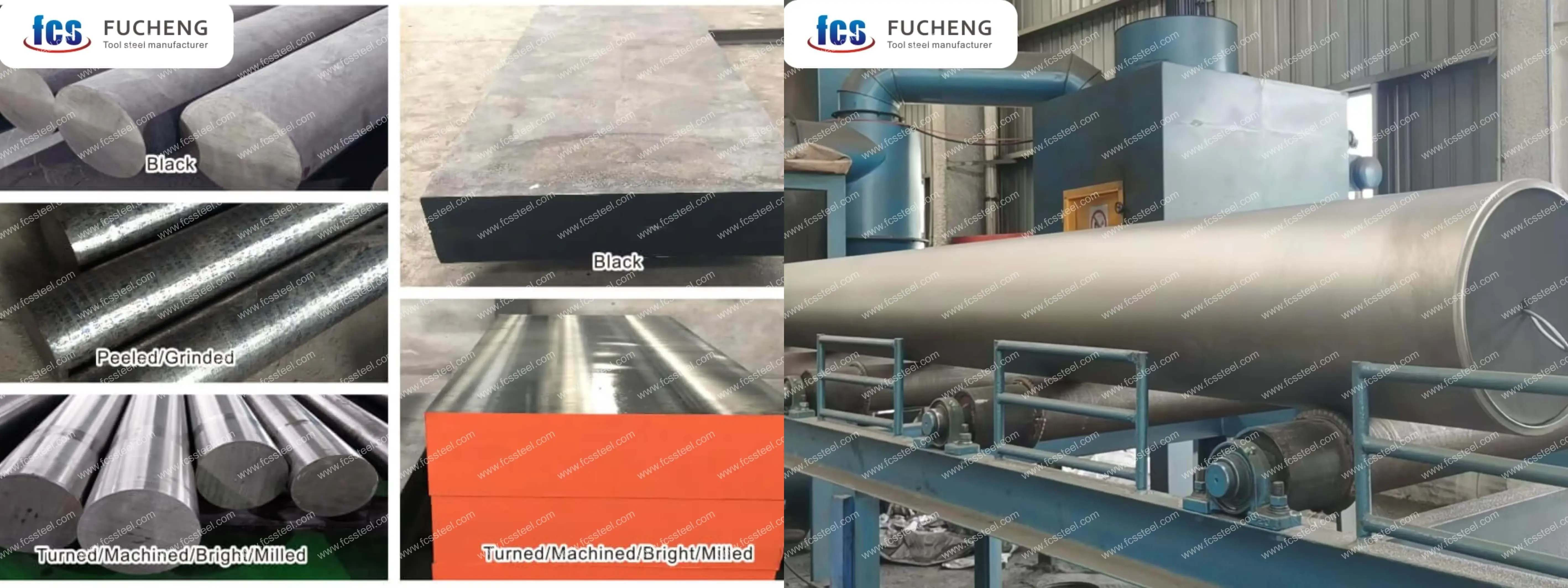
- Customized chemical composition: GB, DIN, ASTM, JIS and other standard grades can be produced. Chemical composition can be customized individually.
- Customized specifications: round steel (diameter), plate (thickness, width) can be customized production.
- Specialized packaging for long term storage or extreme transportation conditions: includes spraying black paint all around, wrapping plastic film, spraying anti-rust oil, and shipping in wooden crates.
- Customized production based on samples or technical agreements.
- SKD61 Tool Steel Electroslag Remelting (ESR): premium option with higher purity and isotropic properties for critical applications.
SKD61 Tool Steel Chemical Composition

SKD61 Tool Steel Heat Treatment Process
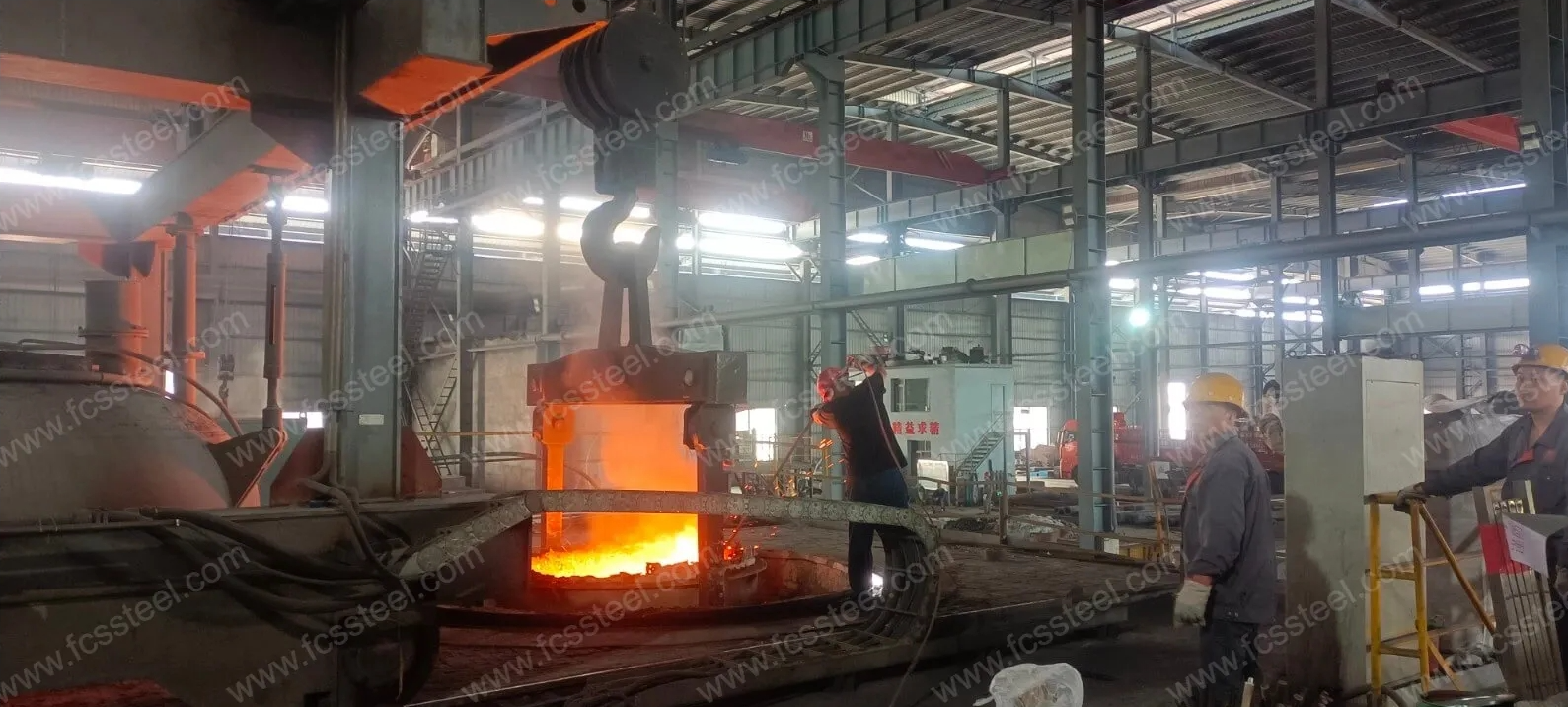
1.Annealing
2.Quenching
3.Tempering
4.Precautions
Heating process should control the rate of heating to avoid too rapid a rise in temperature leading to workpiece surface oxidation and decarburization. Protective atmosphere heating can be used or placed in the furnace charcoal and other anti-decarburization agent.
When quenching and cooling, choose the appropriate cooling medium and cooling method according to the shape and size of the workpiece to ensure the quenching effect while reducing the risk of deformation and cracking.
SKD61 Tool Steel Quality Inspection
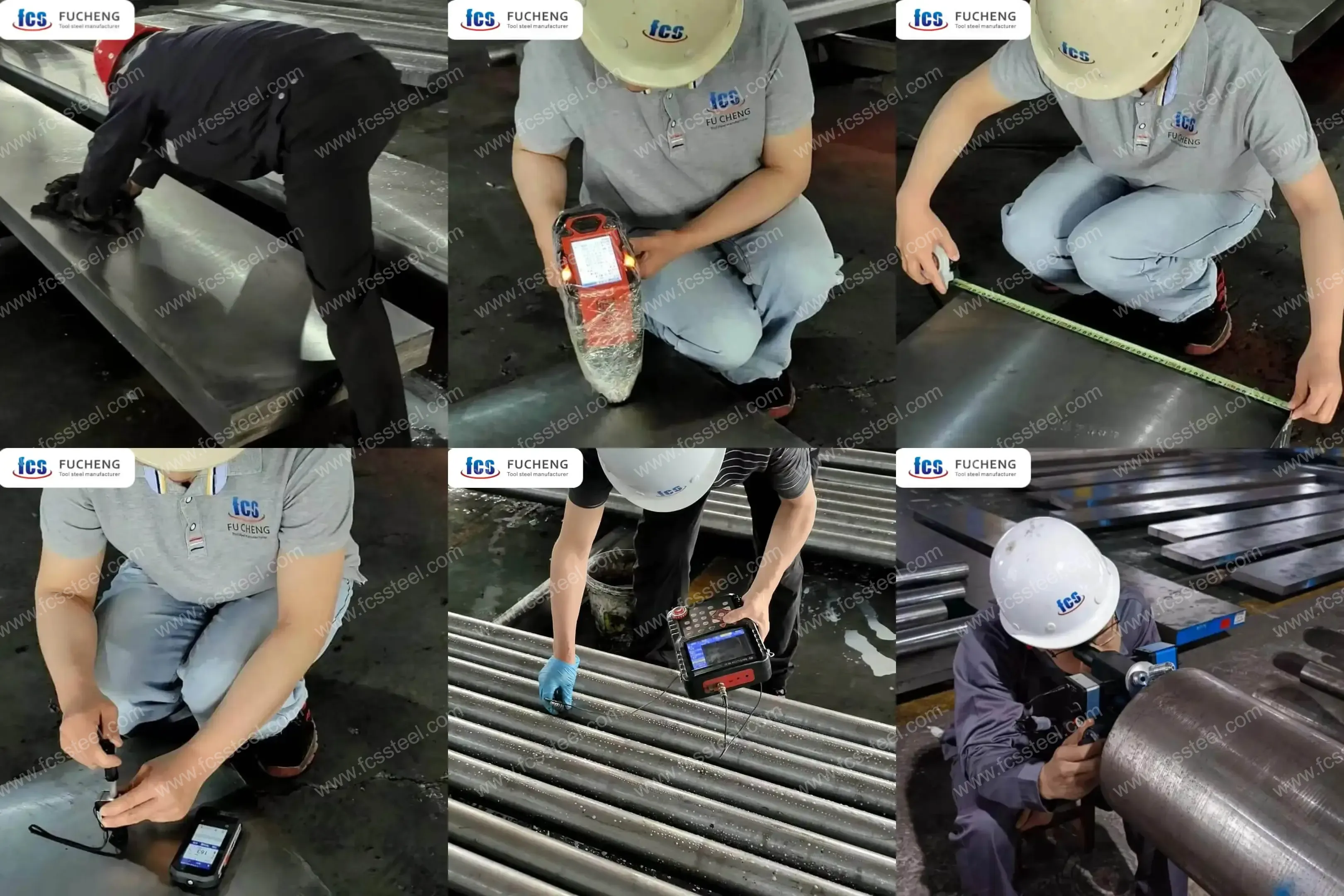
1.Surface Condition Inspection
2.Chemical Composition Testing
3.Dimension and Tolerance Inspection
4.Hardness test
5.Ultrasonic Testing
6.Microstructure Inspection
(1) Metallographic Analysis
FCS factory will use metallographic analysis instrument to detect the microstructure state after heat treatment, including carbide distribution, martensite morphology, residual austenite content, etc.
(2) Grain size rating
SKD61 Tool Steel Technical Specifications
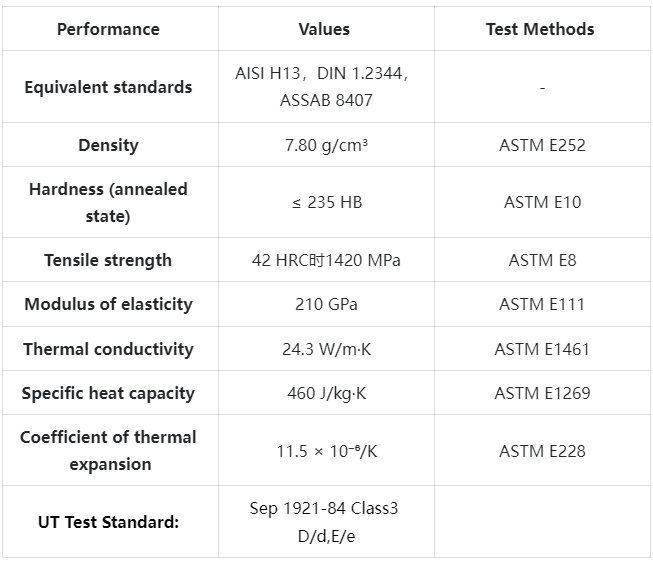
SKD61 Tool Steel Product Applications
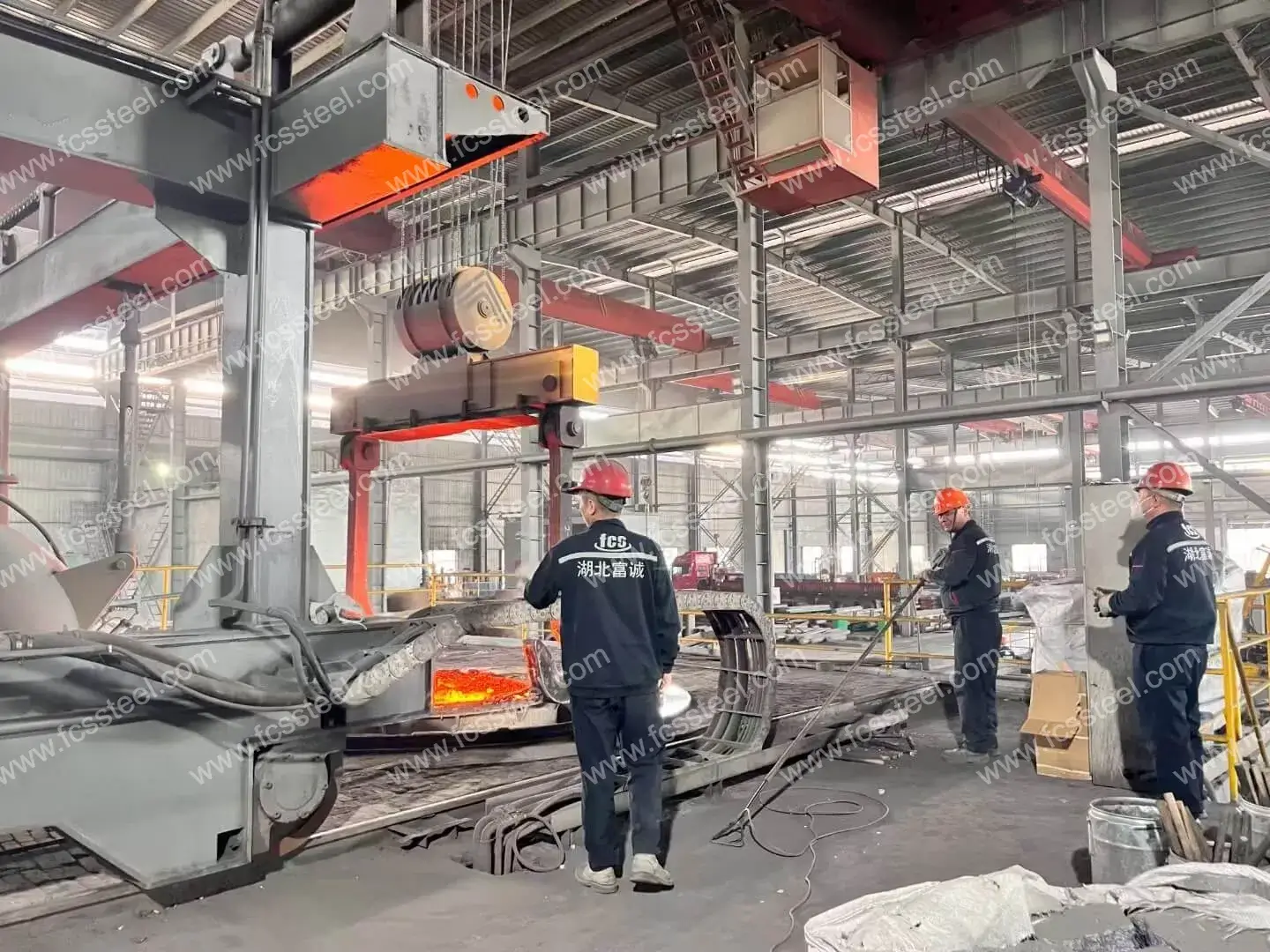
Main application scenarios
Aluminum Die Casting Dies
SKD61 tool steel excels in aluminum die casting applications where dies are subjected to extreme thermal cycling and corrosive aluminum melts. Our steel's optimized composition provides excellent resistance to thermal cracking, thermal fatigue and die sticking. Customers report 30-40% longer mold life compared to standard hot-work steels, especially in complex, thin-walled automotive parts where thermal stresses are most severe. The steel's superior polishability also ensures a superior surface finish on cast parts.
Injection Molds
For high-temperature engineering plastics such as PEEK, PPS and glass-filled nylons, SKD61 provides an ideal balance of hardness, toughness and thermal conductivity. Molds made from our precision-ground SKD61 maintain dimensional accuracy even after thousands of high-temperature injection molding cycles. The steel's excellent response to nitriding and PVD coatings further extends mold life when processing abrasive or corrosive plastic compounds.
Hot Forging Dies
Our SKD61 exhibits excellent resistance to plastic deformation in hot forging operations where dies are subjected to extreme pressures and temperatures. High high temperature hardness retention minimizes die wear and extends the life of molding applications with complex geometries. For precision forging operations where dimensional control is critical, the consistent heat treatment response of our steels ensures predictable performance even in the most demanding applications.
Extrusion Tools
Extrusion screws, barrels and dies made from SKD61 benefit from an excellent combination of wear resistance and toughness. The steel's ability to withstand extreme torque while maintaining edge retention makes it ideal for processing abrasive compounds. Our customers in the plastics extrusion industry report significantly fewer maintenance intervals and more consistent product dimensions after upgrading to our premium SKD61 components.
Industry-specific applications
- Automotive: molds for transmission components, molds for structural aluminum parts.
- Consumer Electronics: molds for complex housings of abrasive flame-retardant plastics.
- Aerospace: precision forging molds for turbine components.
- Medical: molds for high-precision polymer components that require validation.
- Building Products: extrusion molds for aluminum extrusion profiles and plastic compounds.
- Defense: critical components that require validation of material properties.
SKD61 Tool Steel Competitive Advantage Comparison
SKD61 Tool Steel Customer Success Stories
SKD61 Tool Steel Pricing Structure Information
SKD61 Tool Steel Frequently Asked Questions
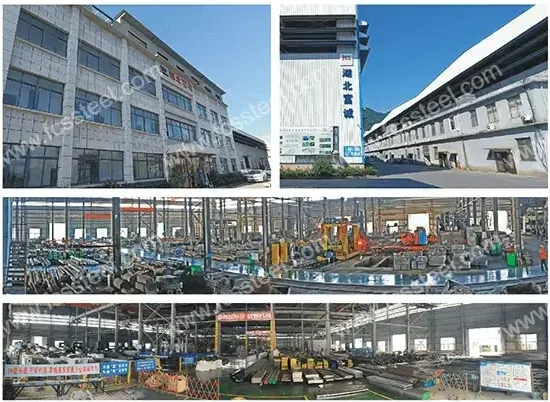
Q: How does SKD61 compare to H13 tool steel?
A: SKD61 and H13 are equivalent grades under different standards (JIS vs. AISI). However, our premium SKD61 is cleaner, more stable and has better heat treatment response than standard commercial H13. The chemical composition ranges are similar, but our tighter control of trace elements and advanced machining processes result in superior performance.
Q: What is the difference between your standard SKD61 and ESR variants?
A: Our SKD61-ESR undergoes additional electroslag remelting to significantly improve cleanliness and reduce non-metallic inclusions. This provides superior polishability, enhanced fatigue resistance and more consistent heat treat response - which is especially valuable for complex, highly polished molds or safety-critical components.
Additional information
| Weight | 45 kg |
|---|---|
| Dimensions | 165 × 60 × 25 cm |

